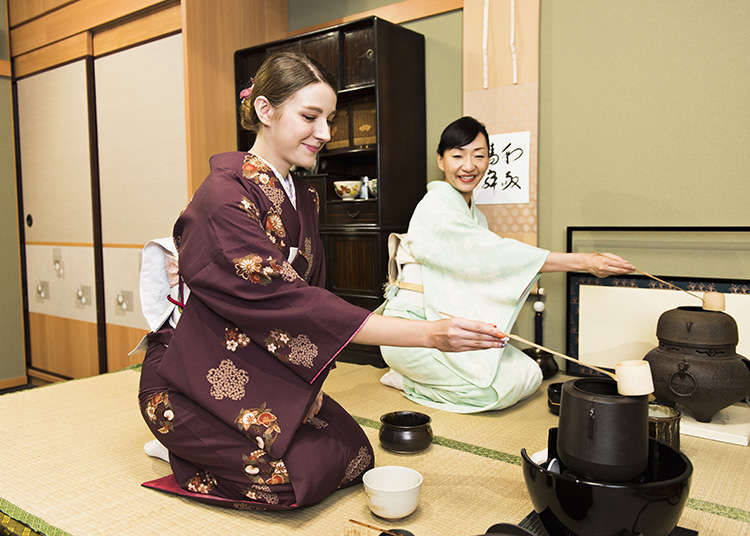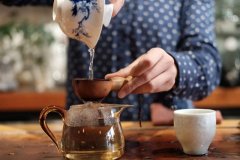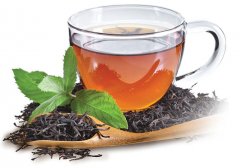The basic knowledge of the tea ceremony the correct seven steps to illustrate the gestures and etiquette of the tea ceremony
In our previous blog, we discussed the tea culture around the world and the traditions of some countries. You may have noticed that we did not discuss Japanese tea culture in that blog, because Japanese tea culture is so deep-rooted and extensive that we think it is fair to dedicate the whole blog to the tea culture of this country.
History
The first record of the Japanese tea ceremony dates back to the 8th century. In ancient times, tea was mainly regarded as a medicine, which could only be enjoyed by monks and the upper echelons of society. It was not until the Muromachi period (1336-1573) that tea entered all walks of life.
For Japan's affluent society, tea parties have become a way to show exquisite tea set collection and tea knowledge. At about the same time, Zen philosophy inspired simple tea parties that paid more attention to the spiritual level. This is the origin of the tea ceremony.
The tea ceremony in Japan
The Japanese tea ceremony is divided into two categories: formal tea ceremony and informal tea ceremony. The formal ceremony is called search, and the informal one is called search. The Chakai ceremony usually lasts less than an hour. However, learning how to perform a ceremony can take years of practice! Special guests such as senior tea artists will also be invited to the tea ceremony. These formal ceremonies last three to four hours. The tea ceremony, which lasts such a long time and takes time to prepare, is usually arranged for important reasons such as celebrating a new era.
These tea ceremonies are conducted in such a calm and calm state that all attention is focused on the preparation of the tea.
The purpose of these ceremonies is to show the hospitality of the host to the guests, rather than service and acceptance in the general sense. It's also a great way to escape the constant worries of a fast-paced life and gain peace of mind.
The process of Japanese tea ceremony
At first it was Huaishi Japanese cuisine, which is a traditional multi-course dish, then a thick cup of tea, and finally a thin cup of tea.
Clothing
In such a ceremony, do not wear flashy or luxurious clothes, simple clothes will not divert attention from the tea ceremony is the first choice. Do not wear any jewelry, because it will scratch the tea set, do not wear a strong smell, it will distort the smell of tea.

Environment
The Japanese tea ceremony is traditionally held in a room called the tatami room. The entrance is usually very low, so guests must bow before they can enter, which shows respect and modesty. Many tatami rooms are located in environments such as gardens, which further enhances serenity, as ceremonies are usually held to gain peace of mind. Like clothing, the garden itself does not have an element of luxury or a strong smell, because it may be distracting again. In front of the teahouse is a stone path, each of which is of different shape and size. Another thing you will notice is a stone basin near the entrance, which visitors can use to wash their hands when they enter the room.
Prepare for
Since the tea preparation process is the main attraction of the tea ceremony, the tea sets used are bamboo mixer (Chasen), green tea powder container (Natsume Shushi), teaspoon (Chashaku), tea bowl, plate candy, kettle, and brazier. Each device has its own location because they are carefully selected according to the type of function they carry.

Ceremony
The traditional Japanese dessert and ashi are served first. Eat it before drinking tea. The host will put the tea on the tatami mat, facing the guest. Then the guests raised the cup with their right hand, placed it on the palm of their left hand and rotated 90 degrees clockwise so that the cup would not face them. After a few sips of tea, it was put back on the tatami mat. After putting the tea on the mat, the guests thanked and bowed respectfully.
Then, when the guest finishes the tea, place the empty teacup facing the host. After a round of tea, the host sometimes asks them if they are interested in drinking another round, if the ceremony is not over. The owner will wash the used tea set and put it back in the same place.
The Japanese tea ceremony is worth experiencing and should be part of your bucket list! These ceremonies show some unique Japanese culture and traditions and are just a feast for the eyes. In addition, we live in such a fast-paced life, everything is in a hurry, it is almost impossible to have a calm state of mind. This is another reason why holding such ceremonies from time to time is good for physical and mental health.
Important Notice :
前街咖啡 FrontStreet Coffee has moved to new addredd:
FrontStreet Coffee Address: 315,Donghua East Road,GuangZhou
Tel:020 38364473
- Prev

Can you lose weight by drinking tea on an empty stomach? When is the best time to have tea in the morning, afternoon and evening?
There is perfect tea on any occasion from morning till night. Different teas have different benefits. They are more useful at certain times of the day than at other times of the day. With so many choices every day, putting all the cups into daily life can sometimes be overwhelming, and figuring out what to drink at any time of the day can be even more confusing. So, we hope
- Next

The efficacy and function of black tea is suitable for what season to drink black tea, where is good, and how to drink black tea best.
These four kinds of teas (white tea, oolong tea, green tea and black tea) are all made from tea trees, but they have different tastes. This is because they are treated in different ways to achieve different degrees of oxidation. Black tea has a higher degree of oxidation than the other three teas, so its taste can be maintained for several years, while green tea may lose its flavor within a year or several years. Ceylon (Sri Lanka) with strong fragrance
Related
- The milk tea cup becomes smaller?! Overlord Tea Girl launches a new "Return to Yunnan" series
- Accused of selling counterfeit and high-priced coffee beans! Well-known boutique coffee brand "Oukelao" bowed and apologized!
- How to make espresso dumplings? Can I eat coffee and glutinous rice balls together?
- Save the unformed and stagnant powder cakes in one second! What is the problem with stagnant water in the powder bowl of the espresso machine?
- What does hand-brewed coffee stop mean? Why is it not recommended to make coffee by hand?
- Is it normal to smell like coffee? Why does coffee smell like alcohol? What's wrong with the strong smell of cold extract ice dripping ice brewed coffee?
- How to solve the problem that hand-brewed coffee extraction takes too long? Why is the water flowing so slowly when making coffee?
- The main points of making Australian white coffee, the proportion details, how does Australian white properly foam and blend the flowers?
- Can ice water make cold extract coffee? What is the difference between room temperature water and ice water for making cold coffee?
- What milk is best for making latte and white Dirty coffee? What is the difference between different brands of fresh milk and pure milk for making coffee?

